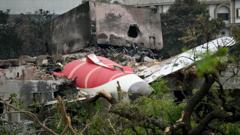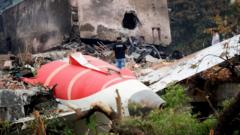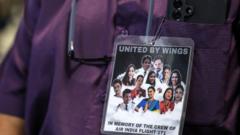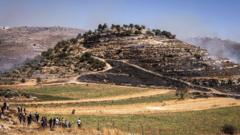The cockpit voice recorder from the tragic Air India flight AI171 that crashed shortly after take-off has been recovered, helping investigators determine the causes behind the disaster. As authorities work alongside international teams to analyze data and identify victims, families are left grappling with the aftermath and seeking closure.
Recovery of Cockpit Voice Recorder Marks Key Progress in Air India Crash Investigation
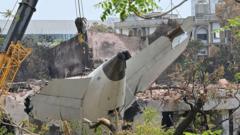
Recovery of Cockpit Voice Recorder Marks Key Progress in Air India Crash Investigation
Investigators are hard at work analyzing the recovered cockpit voice recorder from the Air India flight crash that claimed over 270 lives.
Investigators have successfully retrieved the cockpit voice recorder (CVR) from the wreckage of the Air India flight that tragically crashed just moments after taking off from Ahmedabad last Thursday, leading to the death of over 270 individuals, including both passengers and crew. This significant piece of evidence will aid in discerning the circumstances surrounding the disastrous incident.
The London-bound Boeing 787-8 Dreamliner went down shortly after its departure, sparking widespread devastation. The CVR records essential sounds from the cockpit, such as pilot communications, alarms, and other ambient noises. Along with the flight data recorder (FDR), which captures vital flight parameters like altitude and speed, they collectively form the aircraft's so-called "black box." While called a black box, these devices are painted bright orange with reflective strips to facilitate recovery efforts, and they are built to withstand severe impacts.
The investigation into the crash is being spearheaded by India’s Aircraft Accident Investigation Bureau (AAIB). The agency is being supported by experts from the United States National Transportation Safety Board (NTSB) and the UK, as well as representatives from Boeing and the Federal Aviation Administration (FAA). On Sunday, NTSB officials conducted inspections at the crash location to further assess the situation.
In parallel, a high-level committee established by the Indian government is due to convene for its inaugural meeting this Monday, and it is expected to deliver a preliminary report within three months. This committee will also propose new standard operating procedures (SOPs) to mitigate similar incidents in the future.
As investigations unfold, families of the victims are enduring a painful and drawn-out wait for news about their loved ones. Ninety of the deceased have so far been identified through DNA testing, with 47 identified bodies already returned to their families. Among those confirmed is former Gujarat chief minister Vijay Rupani, whose state funeral is scheduled for Monday in Rajkot.
Tragic accounts from family members provide a glimpse into the trauma being faced. Mistry Jignesh shared his anguish while awaiting information about his niece, highlighting the emotional toll the ongoing identification process inflicts. With many bodies severely burned and the slow DNA matching process spanning several days, families are left in despair, yearning for resolution.
As the investigation deepens, the focus remains on understanding the crash dynamics, providing answers for grieving families, and enhancing aviation safety protocols to prevent future tragedies.







